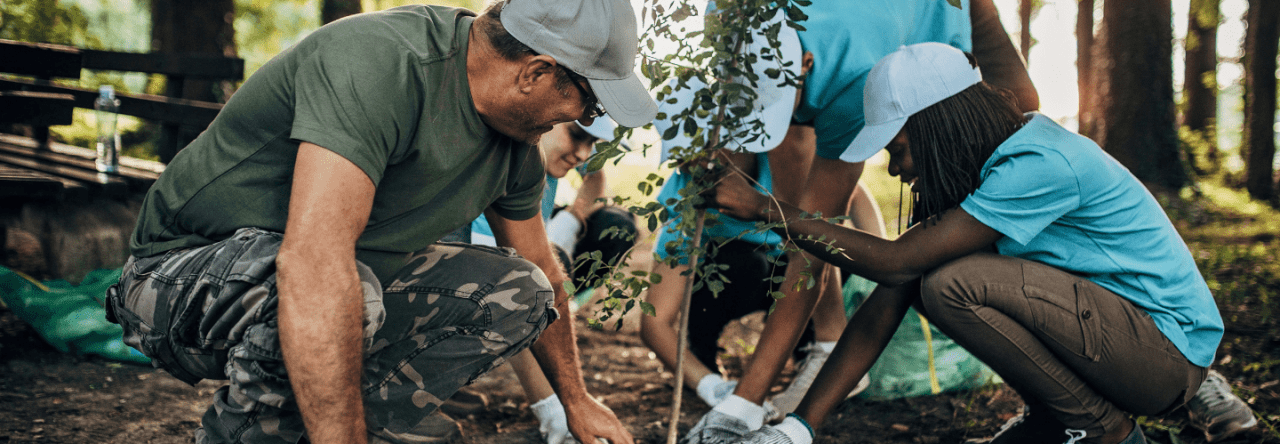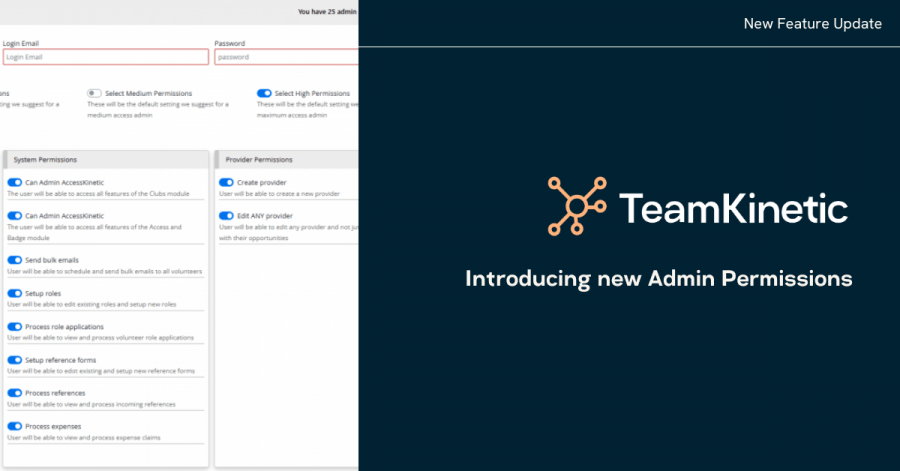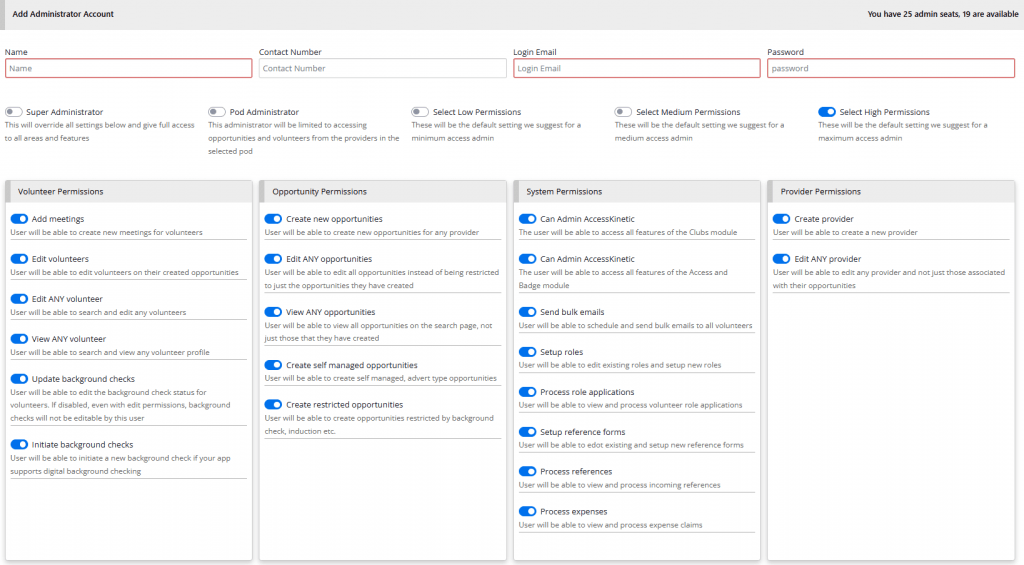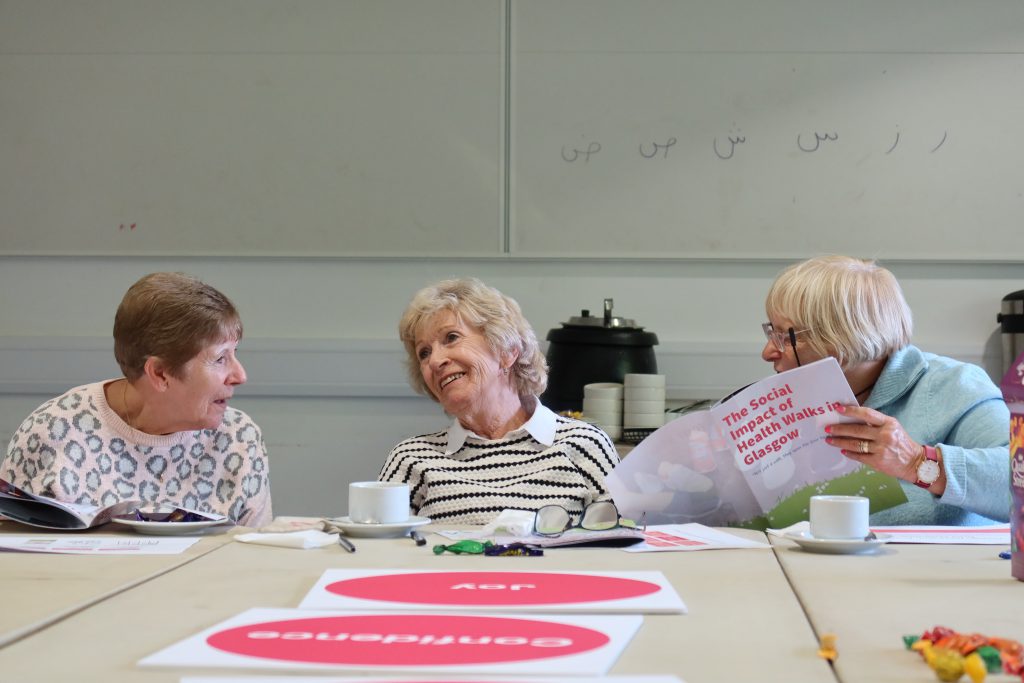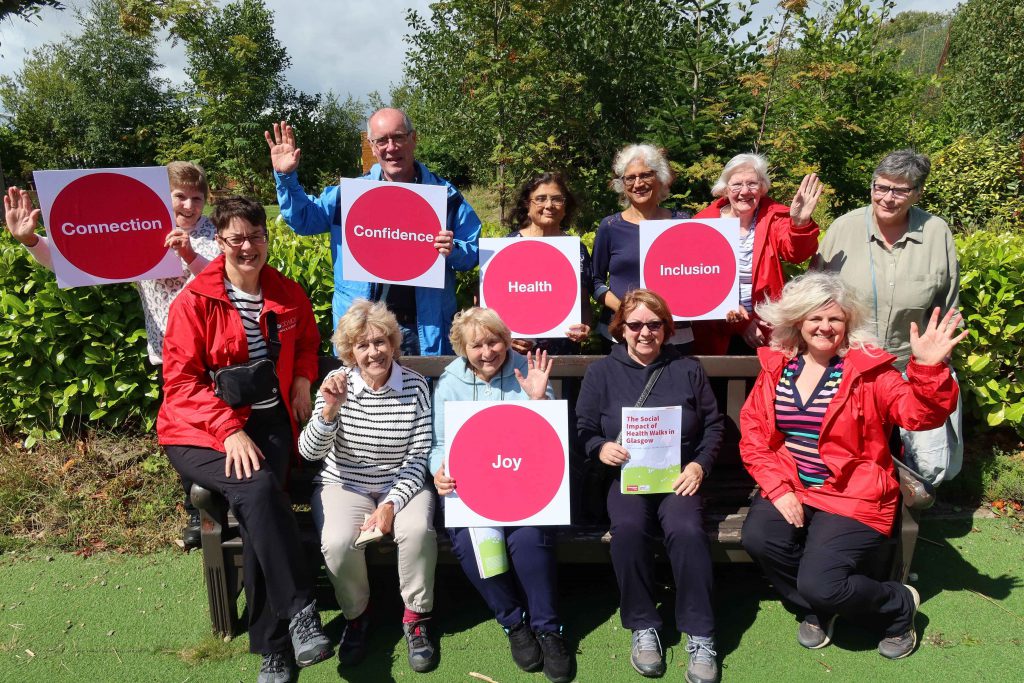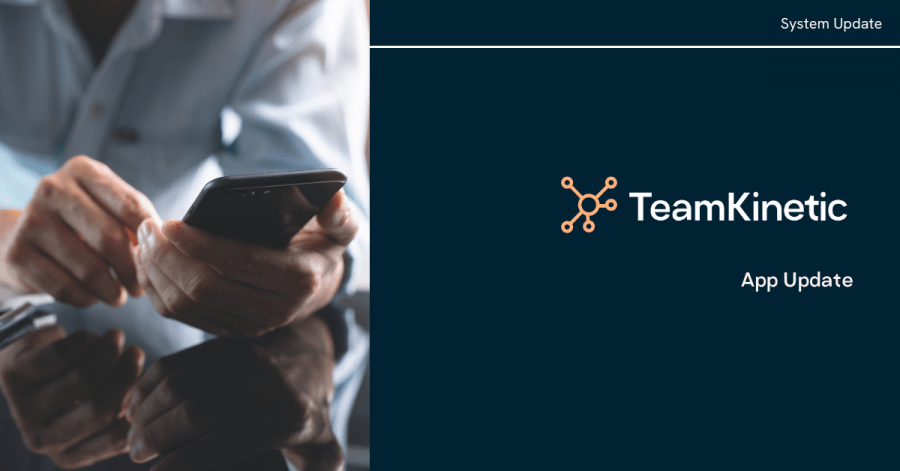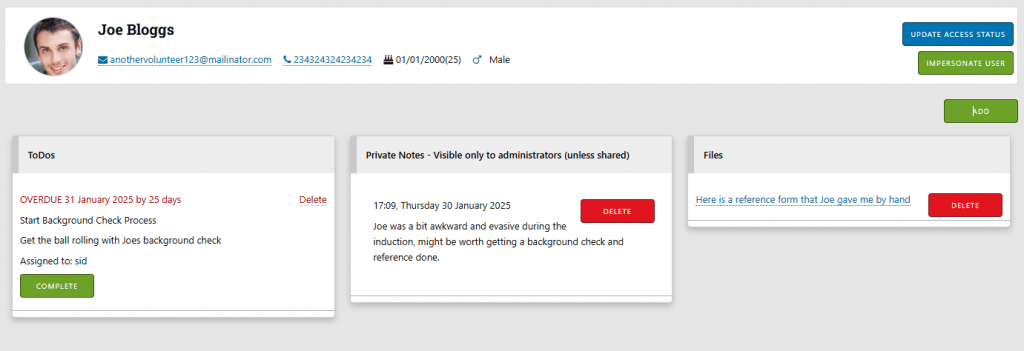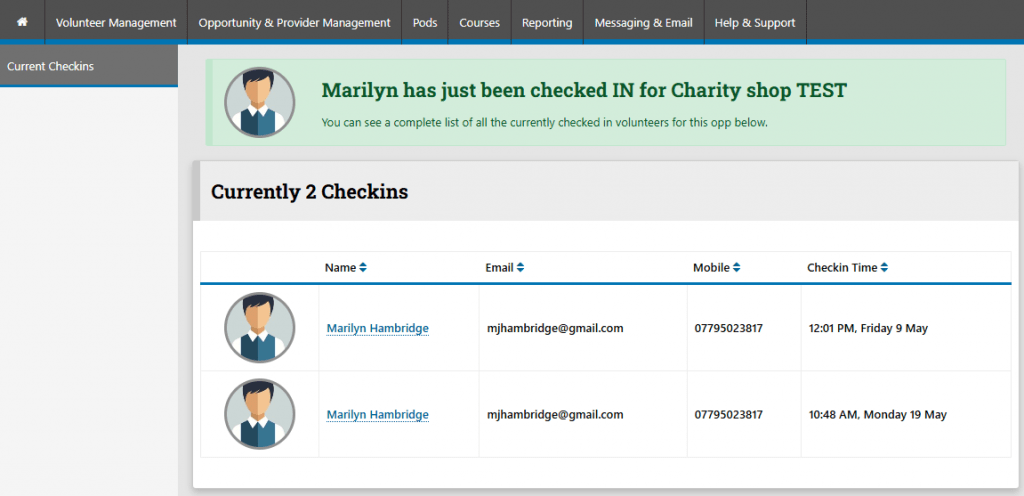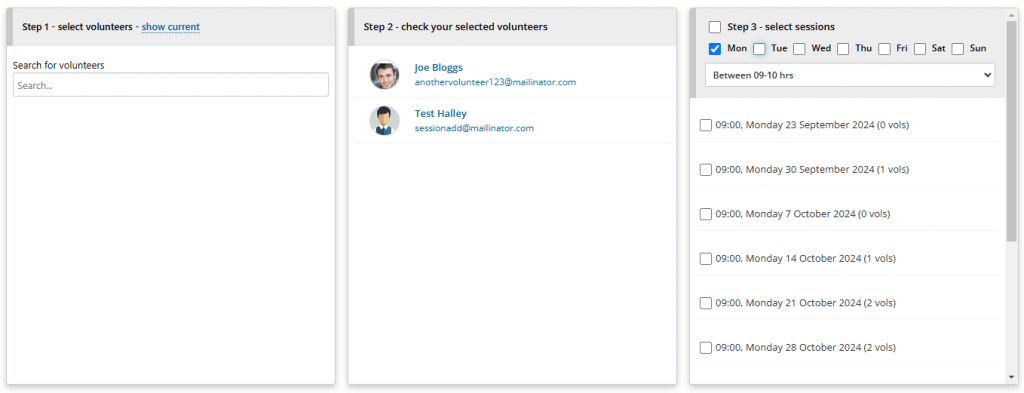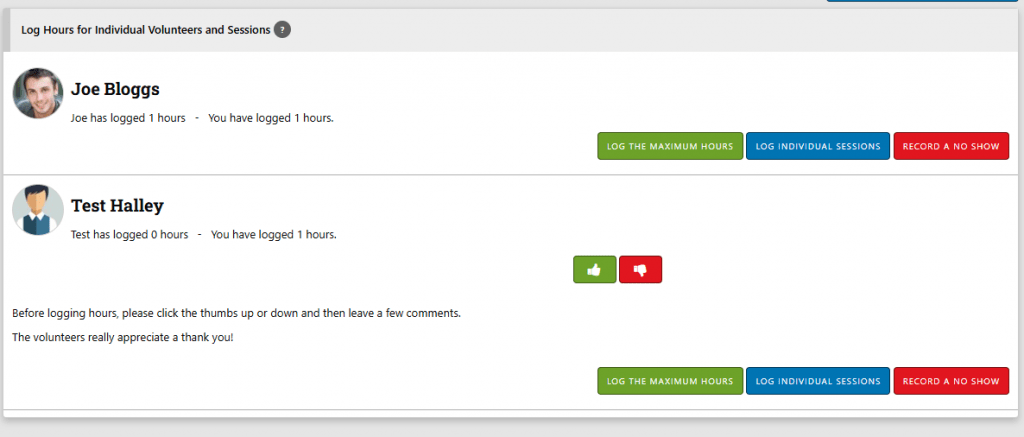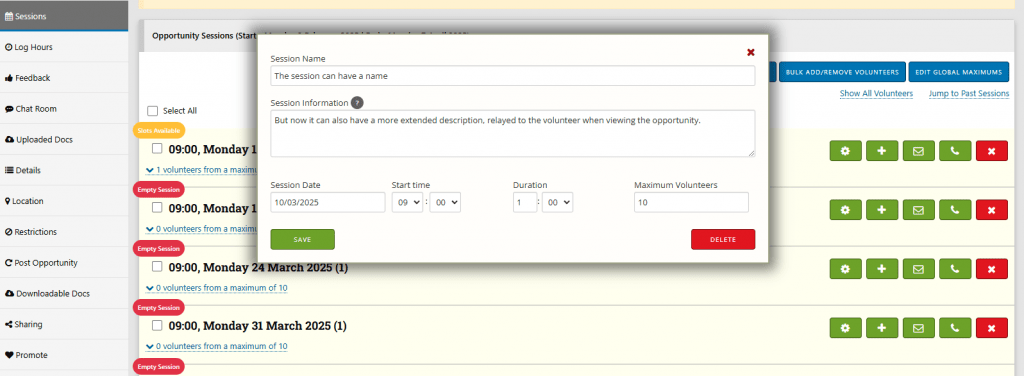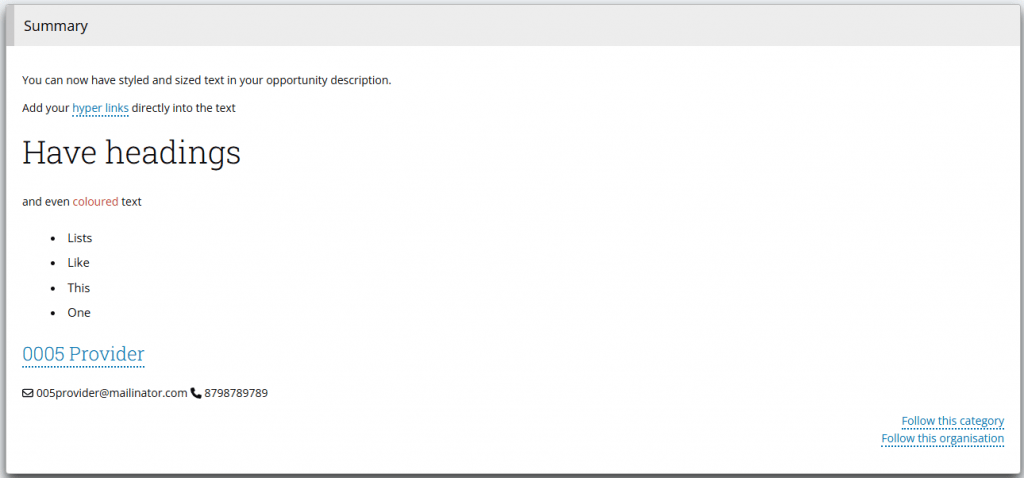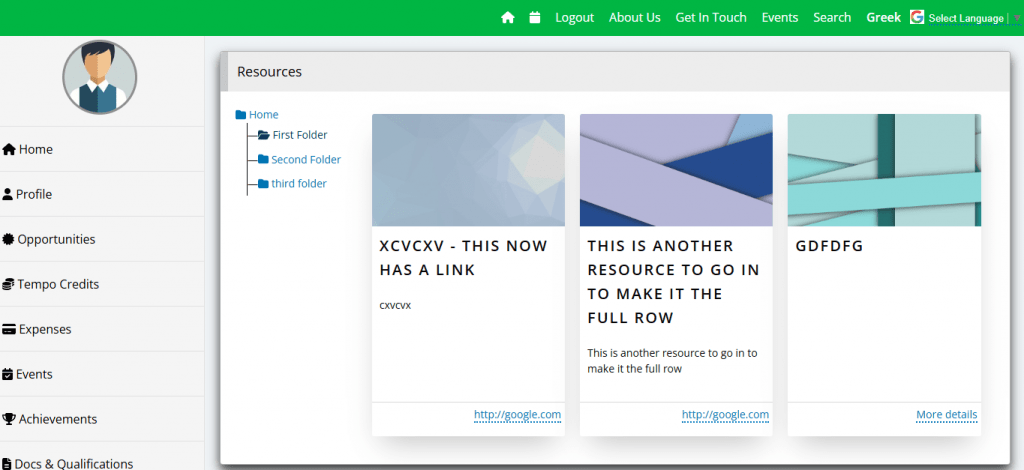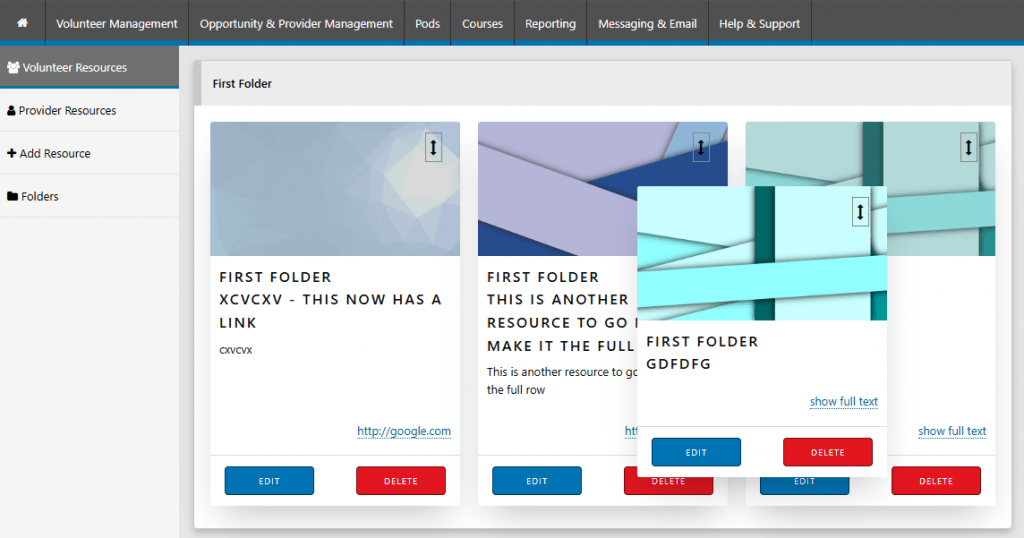The TeamKinetic 2.6.1 Major Release is coming soon, and we want to tell you all about what to expect when the update drops.
This is the largest update to our user features so far in our release history!
Granular Permissions
Super admins can now select granular permissions for all your administrators. Permissions are split over the four areas of volunteers, opportunities, providers and system. Each administrator can have their own bespoke permissions set. There is also a handy set of presets for low, medium, and high-level permissions.
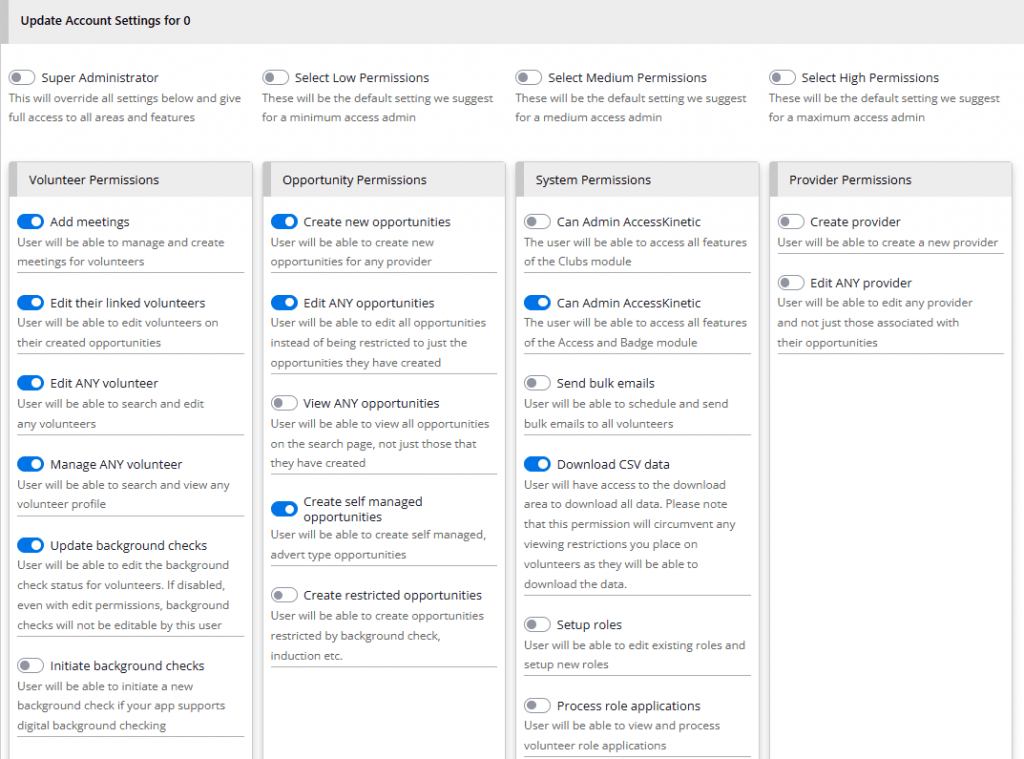
All your current administrators will have all permissions enabled EXCEPT the system permissions, and should experience very little difference to their current mode of operation.
POD administrators will still behave as before, but their limited access to opportunities and volunteers within their pod can be overwritten by the edit all opportunities and volunteer permissions. Any existing POD admins will have those permissions disabled so that the existing POD rules are still enforced.
Of particular note are the new system permissions that allow selected administrators to edit role and reference definitions as well as process role applications and submitted references. This is the first time that Super Admins can assign some roles that were previously Super Admin-only to general administrators.
The opportunity assignment options, as detailed in the next section, can be used to define which opportunities can be accessed by administrators without the edit all opportunities permission. In these cases, any opportunity that is created by an administrator or has been assigned to an administrator is viewable and editable by the administrator.
You can refine and update all your administrators from the Super Admin Menu > Admin Accounts.
You can watch an introductory video here that explains a little more about the permission.
Account assignments for opportunities
Super administrators can now assign individual administrators to particular opportunities. This has two effects.
Firstly, it enables the administrator edit access to the opportunity when they don’t have the edit all opps permission enabled.
Secondly, all enabled administrator email communications will be directed to both the assigned user and the regular central app email.
Administrators and providers can also assign a provider user to the opportunity, which affords no extra access but direct email notifications to the selected user in addition to the central provider email address.

Finally, you will notice that there is a nominal contact email box available to providers and administrators. Here, you can add any email address which will also be added to the email communications for this opportunity.
This has the advantage of not being connected to an existing user, so you could use mailing lists or group emails. Please take care not to use unauthorised emails that could enable some leaking of details to non-authorised contacts.
This nominal email feature can be optionally disabled to prevent the risk of data leakage.
Take a look at the feature in more detail.
GOVO Integration
This is great news as the GOVO platform is gearing up and people are starting to talk about it.

Available from your super admin menu > setup > integrations page you simply have to add your API key to start sharing your opportunities directly to your account at GOVO.
You can either choose to share when adding an opportunity or when editing an existing opportunity. GOVO supports remote/at home opportunities, flexible and sessional and any interested volunteers that find you on GOVO will be redirected back to apply on your TeamKinetic platform. Exciting times.
We’ve put a little video together for the new GOVO and Tickets for Good integration (see below).
Tickets For Good – Another great way to reward your volunteers
We’ve teamed up with tickets for good to enable your volunteers that have logged hours to get their hands on free or heavily discounted tickets to a huge selection of top events. There is always a small booking/ticketing fee to pay and all tickets are on a first come first served basis.
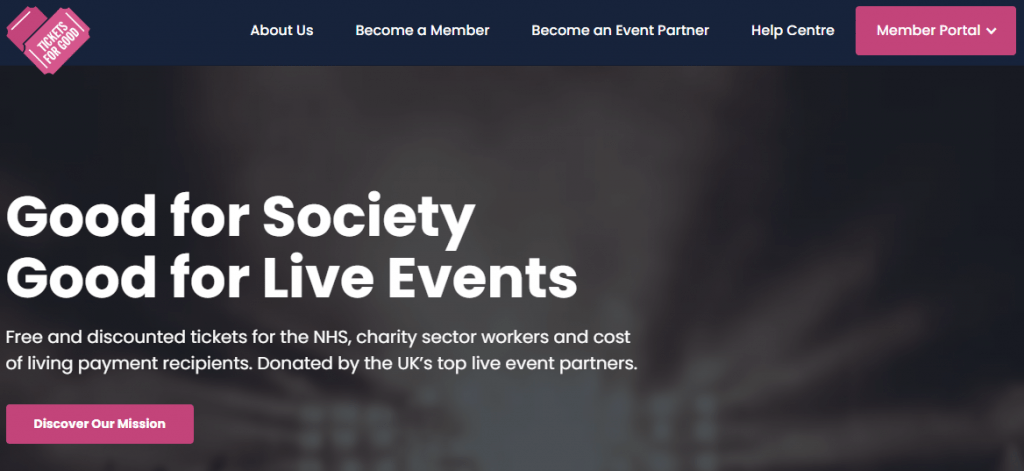
We have to pre-authorise your organisation to make sure it meets the criteria Tickets for Good set out. If you are interested pop along to the super admin menu > setup > integrations to start the ball rolling.
New status options
As part of the revocation options, you can now elect to remove a volunteer’s future sessions when revoking access. This means that their names will no longer show up on opportunities for future sessions, so they should not be expected or allowed to participate.

New Font – What do you think
We have updated the admin system header and body fonts, we think the titles are more readable now. Hope you like it.

Did you know you can use the CSS editor in your super admin setup area to set your own custom fonts for your volunteer pages..? Open a ticket if you want to know how.
New search filters
It’s always difficult to filter out who is active, inactive, available etc, not least because what those words mean is not standardised and they can mean different things in different contexts.
In terms of reporting and hours the TeamKinetic definition of active is always on a session OR logged hours between the filter dates. However when referring to volunteer auto deletion active also includes a login event; a volunteer that has joined no opportunities but has logged in, will not be auto deleted as they are considered active.
To help, we have added some new filters to handle these different situations.

The filters have some extra text so you know exactly what the filter includes and we’ve added a new filter that will pull up all volunteers that were on any opportunity in the period selected where they were not marked as finished.
Changes to log all hours page
The log all hours page has had some changes after talking with out Wildlife Trust customers who had some good ideas to make it more useful.
We have added a provider filter so you can look for specific provider’s outstanding hours, adding some more details on what the rules are when bulk logging hours.
A little checkbox to filter in/out those sessions where some, but not all, the available hours have been logged by a provider/administrator. Usually if less than the maximum hours have been logged, it’s for a reason and you don’t want that to be overwritten by the maximum.
A total can now be found at the bottom of the results and we have excluded the flexible max hours number as it was confusing and doesn’t add anything as when bulk logging flexible hours it copies the volunteer log history if it has more hours than the provider/administrator log history.
New SMS sending rules
This is actually a sort of backwards development! The rules around unsolicited text messages have been tightened up and they now prevent us from using any sender ID we wish when we send text messages. We now have to provide details on the sender ID, what it will be used for and other details, plus a regular monthly cost.
So for these reasons, we have suspended the sender ID options in the account profile area and all SMS messages are sent with a TeamKinetic sender ID. Apologies for those that have got used to having the old Sender ID flexibility.
Auto-suggest timing for typing to speed up results
You may have noticed when using the universal auto suggest search (still the best place to look for individual volunteers, providers or opportunities!) that it doesn’t attempt to search until you pause your typing. So if you type the characters S I M O N in quick succession without pausing, it will search once for ‘simon’ it wont search for ‘s’ then ‘si’ then ‘sim…..’.
This same technique has now been applied to the volunteer auto suggest searches when adding volunteers to sessions, adding meetings and everywhere else you see that volunteer search dialogue.
It reduces the time it spent searching and helps prevent timing issues with the appearance and fading of the list of auto suggested names.
